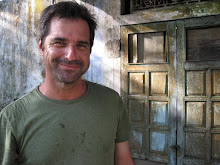If I'm any indication--and I think I am-- the average Joe or Nancy has little idea of the intricacies of this ancient disaster. I guess intricate is an odd word to use when discussing a Plinian eruption (think Mt. St. Helens), even one that happened two thousand years ago, but after a week of interviewing Italian vulcanologists on rates of ash and pumice deposit, seismologists on earthquake effects, and historians on life at the height of the Roman Empire, not to mention a forensic anthropologist on another very important matter I can report loudly and clearly that there's a lot more to Pompeii and Vesuvius than meets the eye--and not just because it was all buried for centuries.
In brief, here's the tale, for anyone who doesn't know. Pompeii and its surrounding towns were, in August 79 AD, among the jewels of the Roman empire. They represented Roman splendor and extravagance since this was, in part, a playground for the elite. Basically, the money went there to play. Then, on that fateful day, it all met its tragic end in the most famous volcanic eruption of all time. Countless died in terrible days that ensued as these glorious communities were buried beneath, in some places, a hundred feet of ash and earthen material.
The upside of such a downer is that the burial of Pompeii, Herculaneum, Oplontis, and other locations essentially preserved these places in a kind of time capsule, making it possible for modern generations to walk the streets of these storied towns. It's not exactly like you're in 79 AD but its pretty close. A lot closer than, say, walking around the Forum in Rome. In Pompeii and Herculaneum you see building after building. And where they've done restoration you really see how the other half lived in this ancient place. It kind of takes your breath away.
So why me? They said they needed an everyman's perspective. So I went--hope you eventually like what you see. Especially about Pompeii.







